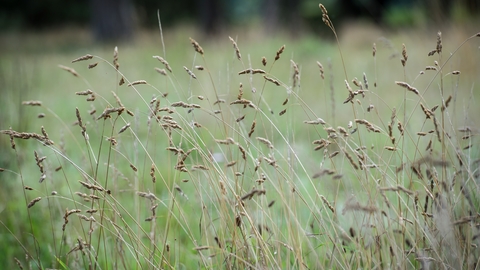
How grassland is classified
Grassland is generally divided into upland, which is above 300m and lowland. This is because the cooler, wetter climate of upland areas favours different species to the warmer, drier and less exposed lowlands. Both types may also be classified as:
- Calcareous - found on shallow lime-rich soils
- Acidic - found on sands, gravels and siliceous rocks
- Neutral - found on clay and loam soils
Meadows are enclosed grasslands where a hay or silage crop is taken in the summer, while pasture is generally grazed.
A natural solution to the climate crisis
UK grasslands store two billion tonnes of carbon in their soils, but this is vulnerable to disturbance. Between 1990-2006, conversion from grassland to arable production (such as ploughing to grow crops) released 14 million tonnes of CO2. Species-rich grasslands are huge carbon stores and when managed carefully they lock in carbon and boost biodiversity.
Grasslands have a huge potential for locking up carbon, not only due to the plants we can see on the surface, but also due to the relationships between the plants, fungi, bacteria and many other species which help enrich the soil with carbon.
Ancient origins
Grassland is an ancient habitat. Following the last Ice Age around 12,000 years ago, mossy vegetation and weedy plants colonised bare ground. This was left after the glaciers that covered the UK had melted. Gradually they developed into communities of grasses, sedges and herbs as more plants found a home. As birches and other tree species arrived and spread, these grassland habitats were pushed back to exposed sites on the coast or high in the mountains.
Grasslands also existed in areas where trees were lost over time such as on floodplains or woodland clearings grazed by wild animals. However, it wasn’t until human activities intensified around 6,000 years ago that grassland began to expand. Today around 40% of the UK’s land surface is grassland.

ConversionConversion EmoticonEmoticon